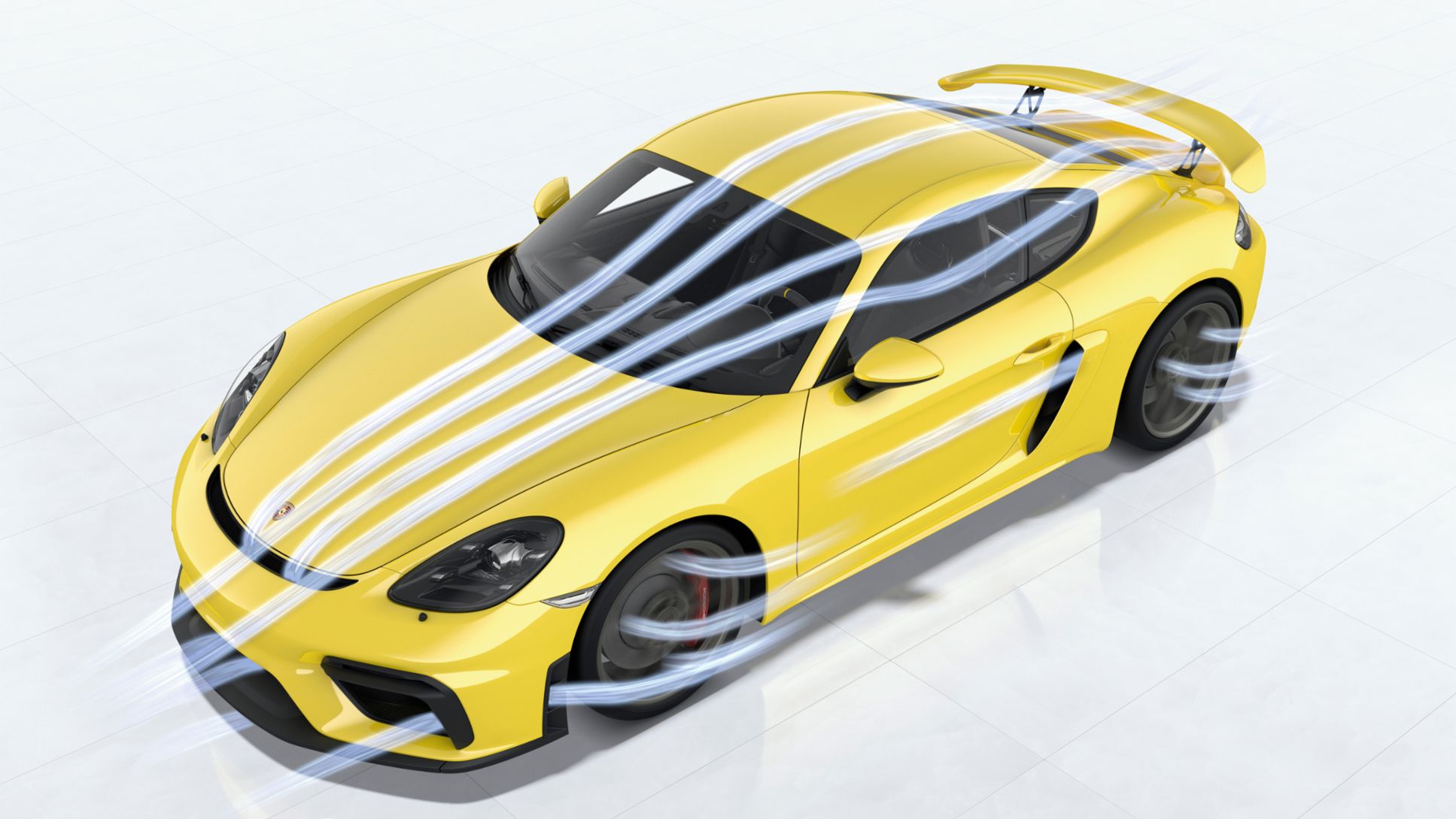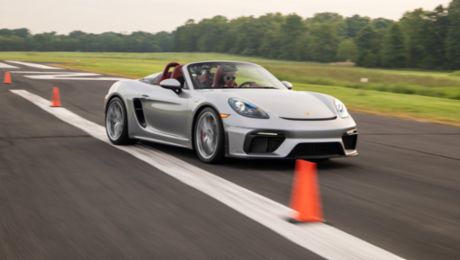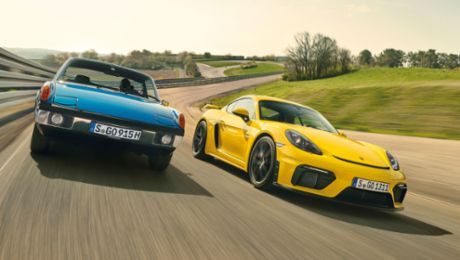718 Spyder: Fuel consumption combined 10.9 l/100 km; CO₂ emissions combined 249 g/km
718 Cayman GT4: Fuel consumption combined 10.9 l/100 km; CO₂ emissions combined 249 g/km
With its sophisticated aerodynamics package, the new 718 Cayman GT4 takes important insights that Porsche has gained with the racing version of its predecessor and adapts them for the new production car. It resolves a classic conflict of objectives: although it generates 50 per cent more downforce and, as a result enables significantly improved lateral dynamics, especially when cornering at high speed, the drag remains virtually unchanged. This paves the way for the marked increase in top speed to over 300 km/h.
At the heart of the aerodynamics of the GT4, which have been optimised in detail, is the functional diffuser, also used in the 718 Spyder. Thanks to a sports exhaust system featuring a single-chamber, saddle-shaped rear silencer, it forms a rising duct in the rear section. The air is accelerated powerfully in this duct and is fed selectively to the encased underbody by means of guide elements. The negative pressure generated as a result literally sucks the vehicle onto the road, accounting for 30 per cent of the downforce that the 718 Cayman GT4 produces on the rear axle – with virtually no effect on drag and therefore highly efficiently.
The generously sized fixed rear wing and its integrated winglets are an expression of the superior sporting prowess of the top-of-the-range coupé. It produces roughly 20 per cent more downforce compared to the last GT4, which corresponds to an additional 12 kg of downforce at 200 km/h. At the car’s maximum speed, there is a total of 122 kg of rear downforce. Sideblades for the lateral air intakes improve the supply of processed air and cool the engine compartment of the Cayman GT4.
With the 718 Spyder, the functional diffuser generates 50 per cent of the downforce on the rear axle: instead of the rear wing, the open-top two-seater has a rear spoiler that rises automatically at 120 km/h. It is the first Boxster model to generate downforce on the rear axle.
The front section, which has been significantly redesigned in the GT style, reduces lift on the front axle in both models, thus maintaining aerodynamic balance. Special bypasses on the outer sides of the front apron – the so-called air curtains – allow the air to exit again in a targeted manner in front of the front wheels, in each case through an inner duct. The airflow this generates counteracts any detrimental turbulence at the wheel housings in a targeted way and generates downforce on the front axle. The central opening in the front apron guides the flow upwards through the centre radiator to an outlet in front of the bootlid, which has long been a characteristic of Porsche GT sports cars. An additional Gurney flap generates a vacuum that sucks air from the outlet. Even the honeycomb lattice of the air inlets has been optimised: the flow is improved as there is less obstruction.
The pronounced front spoiler lip also gets a new shape, with a recessed “GT4” or “Spyder” logo. It comes in different sizes for the two models to correspond to the difference in downforce on the rear axle. At the front end, the special surface on its underside is reminiscent of that of a golf ball. As a result, the airflow follows the contour more precisely, reducing drag. The underbody of the 718 Cayman GT4 and 718 Spyder also features yet another aerodynamic feature: special NACA ducts. These supply cooling air to the engine compartment and especially to the gasoline particulate filters, without impairing the vehicle’s drag coefficient.




